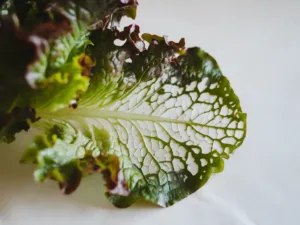Rosemary, this versatile and aromatic herb, not only brings a touch of Mediterranean flair to your kitchen but also to your hydroponic garden! In hydroponics, rosemary can be grown quickly and efficiently, rewarding you with particularly intense aromas and robust growth. Whether you’re cultivating a small herb garden for personal use or managing a larger commercial operation, hydroponic rosemary cultivation can significantly expand your possibilities.
Why should you grow rosemary hydroponically? Hydroponics offers you complete control over your plants’ growth conditions. This means fewer pests, faster growth rates, and most importantly – more intense aroma! However, rosemary has its own requirements, and in this article, you’ll learn everything you need to know to get the best out of your rosemary cultivation.
Which Rosemary Varieties Are Suitable for Hydroponics?
Not all rosemary is the same! There are different varieties that are more or less suited for hydroponic cultivation. Particularly compact and bushy varieties are ideal for hydroponics as they thrive well in most systems and are easy to care for.
1. Rosmarinus officinalis 'Blue Boy': This compact variety grows densely and remains relatively small, making it ideal for smaller hydroponic systems. The Blue Boy has small, aromatic leaves and thrives particularly well in environments with stable temperatures and good air circulation.
2. Rosmarinus officinalis 'Prostratus': Also known as creeping rosemary, this variety grows more horizontally than vertically. It is excellent for systems like Deep Water Culture, where plants have plenty of space to grow. The variety offers a strong aroma and is perfect for culinary purposes.
3. Rosmarinus officinalis 'Arp': This variety is particularly resistant to cold weather and diseases, making it a robust choice for hydroponics. ‘Arp’ is known for its upright stems and intense aroma.
4. Rosmarinus officinalis 'Tuscan Blue': This variety grows more upright and produces long, fragrant needles, making it ideal for harvesting. ‘Tuscan Blue’ requires a bit more space but is perfect for larger hydroponic setups.
The choice of the right variety depends on your hydroponic system, available space, and personal preferences. It’s worthwhile to experiment with different varieties to find out which best suits your setup and taste.
The Best Hydroponic Systems for Rosemary
Rosemary is an herb that thrives well in both small and large hydroponic systems. But which system is right for you? Here are some of the best options:
1. Kratky Method: This simple system is perfect for beginners just starting with hydroponics. It requires no pump or complex technology. Rosemary can thrive here as long as the water is regularly checked and changed. Ideal for small cultivation projects.
2. Deep Water Culture (DWC): This system provides a constant water supply and oxygenation, which is very beneficial for rosemary. Creeping varieties like ‘Prostratus’ particularly benefit from the consistent moisture and space this system offers.
3. Aeroponics: For advanced gardeners, aeroponics is an excellent choice. Here, the plant roots are directly sprayed with a fine mist of nutrient solution, leading to rapid growth and high nutrient uptake. Rosemary responds particularly well here, as the roots remain well ventilated, allowing the plant to grow more vigorously.
Each system has its pros and cons, but all can deliver excellent results when set up and maintained correctly. The decision ultimately depends on your level of experience and available resources.
Properly Growing Rosemary: From Seed to Seedling
Growing rosemary in hydroponics is a crucial step for obtaining a healthy and productive plant. Rosemary can be propagated from both seeds and cuttings, with cuttings often being the faster and easier option.
1. Seed Cultivation: If you choose seeds, start rosemary in small seed cubes or germination boxes. Since rosemary seeds often have a low germination rate, it’s advisable to sow multiple seeds in one cube. Germination can take between 2-4 weeks, so be patient and keep the environment warm (around 21-25°C) and slightly moist.
2. Cultivation from Cuttings: Cuttings are often the preferred method as they root faster and the new plant will have the exact same characteristics as the parent plant. Cut a 10-15 cm long cutting and remove the lower leaves. Place the cutting in a moist substrate like rock wool and ensure the ambient temperature remains constant. After about 2-3 weeks, the cuttings should have developed sufficient roots to be transferred into the hydroponic system.
3. Care of Young Plants: Whether from seeds or cuttings, young rosemary plants require careful care. Ensure they receive enough light (at least 12-16 hours per day) and that the nutrient solution is properly adjusted. Once the plants are strong enough, you can transfer them to your chosen hydroponic system.
The Right Substrate for Rosemary in Hydroponics
The substrate is a crucial factor for the success of your rosemary cultivation in hydroponics. Rosemary prefers well-aerated substrates that offer good drainage while providing enough support for the roots.
1. Rock Wool: This substrate is a favorite in hydroponics because it offers excellent water and air permeability. It is ideal for growing rosemary from seeds or cuttings as it supports the roots well while providing enough moisture.
2. Coconut Fibers: Coconut fibers offer a good balance between water retention and drainage. They are particularly suitable if you prefer a sustainable substrate. However, ensure they are well-rinsed to remove salt residues.
3. Perlite: As an addition to other substrates like coconut fibers or Vermiculite, perlite can improve aeration and ensure that the roots do not become too wet. It is well-suited for rosemary, which requires good root aeration.
Each substrate has its advantages, and often a combination of two or more materials is most effective. Experiment to find out which best suits your setup.
Optimal Temperature for Rosemary: Keeping Your Herb Healthy
Rosemary prefers a moderate climate and thrives best at temperatures between 18-24°C. Ensure the temperature remains as constant as possible both day and night to avoid stress for the plant. Sudden temperature fluctuations can affect growth and make the plant more susceptible to diseases.
If you live in a region with extreme temperatures, temperature control through ventilation, heating mats, or cooling systems may be necessary.
Light Conditions: How Much Light Does Rosemary Really Need?
Rosemary loves the sun – and this holds true for hydroponic cultivation as well. Ensure your plants receive at least 12-16 hours of light per day. LED lamps are an excellent choice as they offer a broad light spectrum while being energy-efficient.
Place your lamps about 30-50 cm above the plants to ensure even light distribution. In winter months, when natural light is limited, additional lighting may be necessary. Make sure the plants are evenly illuminated to promote uniform growth.
PH & EC Values for Rosemary: What Is Optimal?
For successful cultivation, it’s crucial to maintain the pH value of the nutrient solution between 5.5 and 6.5. Rosemary prefers slightly acidic conditions, which promote the absorption of nutrients such as nitrogen, phosphorus, and potassium.
The EC value (electrical conductivity) should be around 1.5 to 2.5 mS/cm. Regular checking and adjustment of the values are necessary to ensure the plants receive the optimal amount of nutrients.
The Best Fertilizer for Rosemary in Hydroponics
Rosemary requires a balanced nutrient supply to grow healthy and aromatic. A good hydroponic fertilizer should contain a mix of macronutrients (nitrogen, phosphorus, potassium) and micronutrients (iron, magnesium, zinc, etc.). Nutrient solutions specifically developed for herbs are often ideal, as they are tailored to the slow growth and specific requirements of plants like rosemary.
Be sure to gradually increase the amount of fertilizer to avoid over-fertilization, and regularly check the nutrient concentration in the water.
Harvesting Rosemary: The Perfect Time and Technique
The best time to harvest rosemary is in the late morning when the essential oils in the leaves are most concentrated. Use a sharp pair of scissors or a knife to cut the shoots cleanly without damaging the plant.
Always cut only the top two-thirds of the plant to encourage growth and prevent the plant from becoming bare. After harvesting, you can dry the branches in a dark, well-ventilated room or use them fresh immediately.
Diseases and Pests in Rosemary: Prevention and Control
Although rosemary is relatively robust, there are some pests and diseases that can affect it. Common issues include aphids, spider mites, and powdery mildew.
Preventive Measures: Ensure good air circulation and avoid overwatering to minimize conditions for fungal infections. Regular checks for pests help to identify and address problems early.
Control Methods: Neem oil and soap-based insecticides are effective against spider mites and aphids. Powdery mildew can be treated with a mixture of water and baking soda. When in doubt, it is worthwhile to prefer biodegradable and natural solutions.
Plant-Specific Tips: Making Your Rosemary Extra Aromatic
The intensity of rosemary’s aroma depends greatly on care and growing conditions. A little stress, such as occasional reduction in watering or an increase in light intensity, can lead the plant to produce more essential oils. Targeted harvesting also promotes growth and aroma intensity.
Your Path to Aromatic, Hydroponically Grown Rosemary
Growing rosemary in hydroponics is a rewarding experience that not only provides you with fresh, aromatic herbs but also a deep understanding of the needs of this unique plant. With the right techniques and a bit of patience, you can harvest and enjoy your own perfectly growing rosemary.
Happy gardening!







